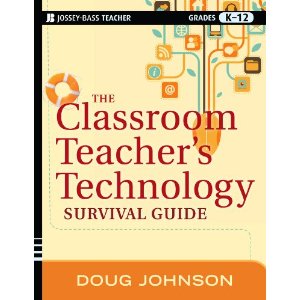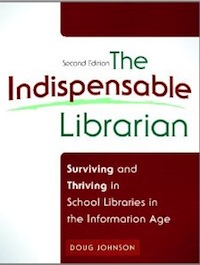Are you speaking where people are listening?
Are you speaking where people are listening?
Head for the Edge, LMC
August/September 2011
Email is for old people—literally.
Email use dropped 59 percent among users aged 12-17, as well as 8 percent overall, according to ComScore’s 2010 Digital Year in Review. Users between 18-54 are also using email less… Huffington Post, March 2, 2011 <tinyurl.com/emaildeclines>
One of my very first published articles was about the importance of librarians creating a good communication program. In “Using Planning and Reporting to Build Program Support” (The Book Report, May 1992), I wrote*:
Few educators outside our own profession really seem to know what we should do, what we can do, and what we actually do. I believe it is because library media specialists tend to neglect the “ends” of the job: planning and reporting. A formal, systematic procedure for media program planning and reporting can effectively increase staff and administrative support, and should be given a very high priority among the myriad of building level media professional’s tasks. …
The article described three reporting tools: a bi-monthly principal’s report, a monthly faculty newsletter, and a regular column in the school’s parent bulletins. I recommended keeping media activities visible throughout the year and that communications needed to inform the entire staff, all parents and the community, not just the administration.
Oh, for the simple days of what seemed like a single means of communication - the printed newsletter that could be slipped onto a principal’s desk, in a teacher’s mailbox, or in a student backpack. (Alice Yucht created a “toilet paper” by taping the library newsletter to the back of bathroom stall doors!) Those of us who were “tech savvy” created our newsletters in a word processor or desktop publishing program, adding headlines, columns and clip art.
Most librarians quickly recognized that e-mail was an even more effective method of distributing newsletters and timely information. And that’s what most of us have done for the last 15 years or so. But as the study in the opening quote suggests, we need to rethink our communication strategies - especially with our students, younger parents, and beginning teachers. We need to be speaking in places where the young are actually listening, viewing and reading.
Here are some new avenues for information dissemination. Conveniently, once a message is created, it can be distributed through multiple channels.
- A Facebook Fan Page is easy to create if you have a personal Facebook account. The Facebook support center has good information on the topic. “Fans” don’t have access to the rest of your (probably debauched) Facebook account, so this is a safe and effective way to reach those who only seem to use social networking for communication.
- A blog with an RSS feed is more effective than a static website. The interactivity of a blog will be appealing to those who like to respond to ideas. I’ve always thought Francey Harris’s fantastic Gargoyles Loose in the Library blog <tinyurl.com/librarygargoyles> is the model for this medium of communication.
- Twitter is popular among a growing segment of Internet users. The 140 characters are about enough to alert readers of an event or to provide a link to more substantial information posted somewhere else. Or maybe “tweets” can inform your staff and students about the latest books, effective resources and continuing services available in your library. Build a “following.”
- Text, e-mail, voice message blasts may be possible in your district. Our public relations department is the master of sending these alerts out. If you have some exciting news for parents, this may be the most effective means of information. Check with your PR department or student information system manager. Oh, there are free text-messaging services so you don’t need to use your personal cell phone account quota.
- GoogleApps for Education has a wonderful tool called GoogleGroups that makes sending and archiving e-mails to larger groups really simple. It’s e-mail, yes, but still an efficient way to get word out to your “mature” staff.
- While I am all about the written word, clever librarians are telling their stories in ways that reach visual, auditory learners. I was blown away by Buffy Hamilton’s year-end report she created with Animoto <tinyurl.com/bhamilton>. Post library videos on TeacherTube or make podcasts. It’s a little old now, but the Minnesota Educational Media Organizations video about school libraries educated a lot of parents and community members. <tinyurl.com/memovid> As long as people are walking around with things stuck in their ears with eyes glued to a tiny screen, they may as well be learning something cool about the library.
I am not convinced that e-mail is as dead as some might suggest. Nor am I convinced of the longevity of some of these other communication media. But I do know this: Librarians must have regular and formal communication strategy for students, teachers, principals and parents more now than ever. People have to know what we do in order to advocate for us.
Libraries in concept only are easy to cut.
*Freely translated from the original Old English.





Reader Comments